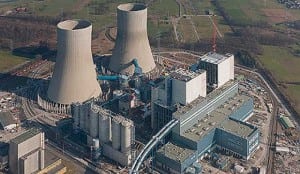Low River Water Could Cause Problems for German Coal Power Plants
German utility RWE warned energy markets this week that low water levels on the Rhine River may affect the delivery of hard coal to some of its plants, although no power production has yet been affected.
An October 17 Platts report quotes an RWE spokeswoman as saying on Monday, “Continued low river levels are increasingly a challenge for transporting the coal [by river barge from the ARA region].”
Plants that could be affected include Bergkamen, Gersteinwerk, and Westfalen.
Below-Normal Water Levels
Reuters reported that the Rhine has been below normal levels since early September. Low water levels on the Rhine and the Danube River are the result of dry weather and have affected shipping of other goods as well as the movement of tourists on river cruise ships. (Earlier this year, heavy rainfall and high water levels created a different set of problems for river transportation on these two rivers: reduced clearance under bridges.)
Germany’s The Local reported that “Dozens of ships have gotten stuck trying to navigate along the low waters of the Rhine within the past two weeks, according to Duisburg water protection police,” which is far more than would be expected if water levels were normal. September, October, and November are typically low-water months for the Rhine, but “when you compare the current level with those of the last 20 to 30 years, this is a very low water level,” hydrologist Jan Böhme of the Duisburg-Rhein Waterway and Shipping Agency explained to The Local.
Coal Remains Important for Germany
Although Germany generates at least a third of its electricity from renewables these days, coal power continues to be a valuable source because, unlike natural gas–fired plants, Germany has indigenous fuel for the coal plants.
Of the Westfalen plant, for example, RWE’s website notes that its Units A und B (together 320 MW) began generating power in 1963. The 305-MW Unit C was added in 1969 to meet increasing demand, especially from industry. The first two units were retired in February 2011. Unit C continues to produce electricity “from hard coal with shares of substitute fuels, like solid recovered fuels.”

RWE Generation was expanding the plant with two new units, D and E, with a total capacity of 1,600 MW. “At a net efficiency of 46 percent,” the company says, “they reduce CO2 emissions compared to older plants by 2.5 million tonnes per year. Unit E began commercial operations at the beginning of July 2014.” However, as POWER reported in the March issue, “Rapidly decreasing utilization rates for conventional power plants are killing the financial returns of old-line power producers, along with those of the institutional investors who once relied on their profits.” Consequently, “In late December, RWE even took the unprecedented step of mothballing its brand new billion-euro Westfalen-D coal-fired plant, deciding to close the future white elephant before it was even able to fire up.”
—Gail Reitenbach, PhD, editor (@GailReit, @POWERmagazine)